Huh, what are these cards? Where did they come from? Why have I not seen them in the game yet? Well, ladies and gentlemen, that’s because these are fan-made cards. DUN dun DDDDUUUUNNNN!!!!
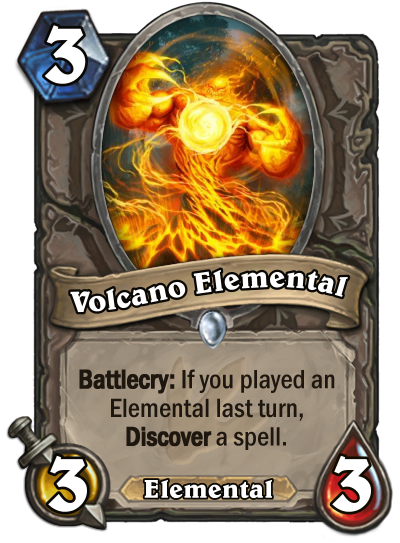
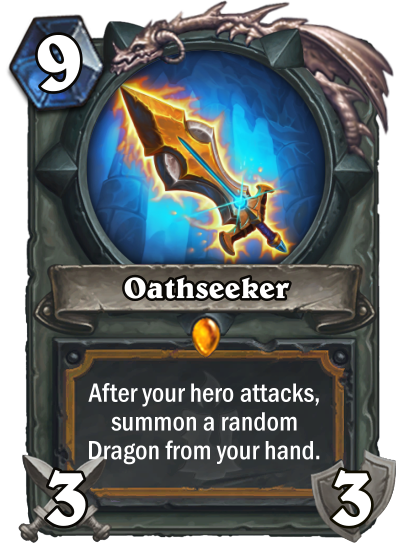
Hello readers, this is Demonxz95 bringing you a brand new guide series here on Out of Cards. The Fan Creation Tutorials will teach players about creating their own fan-made cards. These cards are all made with help of a very nifty website called HearthCards. HearthCards allows you to create your own fan-made Hearthstone cards, and publish them. HearthCards was created by a user named Nikko, so you can thank him for this amazing piece of art!
But how exactly would one use HearthCards? Great question! Let me show you around.
Interface
Once you open HearthCards, we you will be treated to the screen below, which will show you a random card from the database made within the past few days, in this case, Mass Cleansing. You can also give it a star rating by clicking on one of the stars, if you do, another custom card will show up. You can rate as many cards as you want, though the reach of how far it can go is unknown at this point. As you can see in the indicator at top-right, almost 9 million cards were made with HearthCards to this day!

From this point, typing anything or clicking on any of the buttons will clear the featured card and replace it with a blank canvas. The star ratings below the card will also disappear.
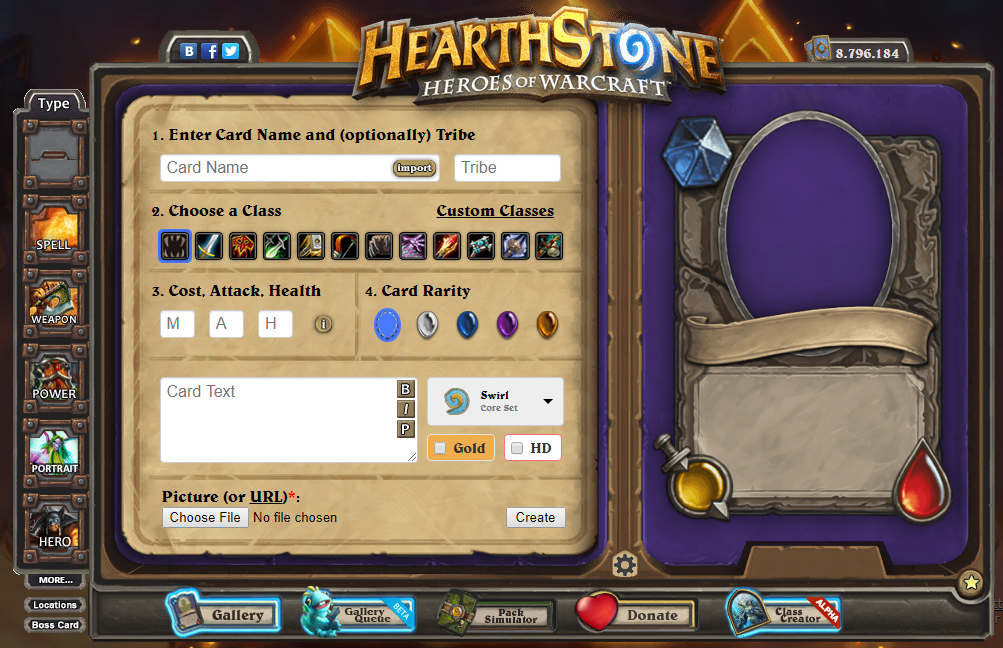
Now, simply go nuts with the buttons.
In the left menu, you can choose a type of card you want to make. You can make minions, spells, weapons, Hero Powers, hero portraits or Hero cards. There are also the “MORE…”, “Locations”, and “Boss Card” options, but we’ll get to those in another article, stay tuned!
How To Make a Card
Name and Tribe
Let's start with giving your card a name and a tribe. If your card (minion) doesn't have a tribe, leave the field empty.

As you write the name and tribe of your card, it will start to appear naturally on the card.
The “import” button will allow you to write the name or input ID number of an existing Hearthstone card and apply that card to your canvas. If you wish to make a fan-made change to an existing Hearthstone card, or if you forgot some small detail on a card you just created and don't want to repeat the entire process again, import function will help you quickly load the created card via a specific text string associated with each created card that is part of its URL.
Class
Next, we assign a class to which the card will belong to.

From left to right, your options are Neutral, Warrior, Shaman, Paladin, Hunter, Druid, Warlock, Mage, Priest, Death Knight, and Monk. Selecting one will automatically change the card frame border. You, however, have more options. Clicking on “Custom Classes” will bring up a menu of 25 custom card borders, all of which have been created by members of the fan community, although there is no official tool on the website to make these.
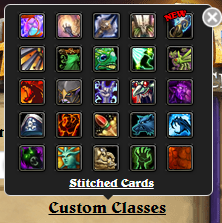
From the 25 currently available designs, only 17 of them support the use of Hero cards. Designs that do not support Hero cards are Corrupted, Sorcerer King, Worgen Hero, Pirate Hero, Berserk, Warden, Swords and Thrones, and Death Knight (Old). These were made prior to Knights of the Frozen Throne expansion, before the Hero cards existed.
Each class is designed with a unique card border motif.
Stats and Rarity
Once you have your card name and a class selected, it is time to get to the mathematical part of the process, in other words, the balance of a card. This is where you set Cost, Attack, and Health of your card (represented by fields M, A, and H respectively).

If you’re making a weapon, Health will represent its Durability, and if you’re making a Hero portrait or a Hero card, it will represent its Health or Armor. Not all options will be available at all times. For example, if you’re creating a spell, Attack and Health fields will be grayed out and you cannot write in them.
The “i” button next to the fields will bring up the “Balance Helper”, which shows a minimalist-style list of every collectible minion in the game. This will allow you to compare the balance of your card to other cards in the game, although it only lists minions, meaning it’s not much help making spells, weapons, or Hero cards.
This is also where you choose the rarity of your card. From left to right, it follows smooth, logical progression, ranging from Basic (blank), Common (white), Rare (blue), Epic (purple), and Legendary (orange). If you pick Legendary rarity and are making a minion, a silver dragon element will appear above the card, which is a Hearthstone's way to easily distinguish Legendary cards at first glance from the rest. If you make a Basic card, the card will also not display any watermark (by default).
If you are making a Legendary spell or weapon, the silver dragon will not appear on the canvas, but it will show up correctly when the card is created.
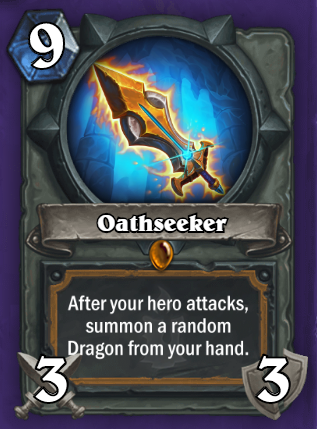
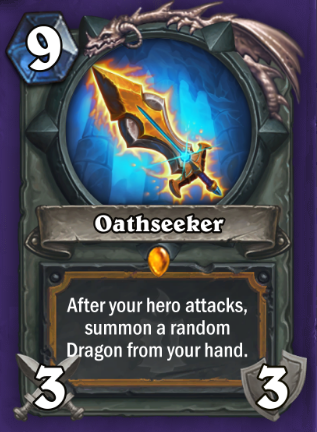
Left Image = How the card appears on the canvas.
Right Image = How the card appears after it's published.
One more thing, by leaving Attack and Health fields empty, you can also create a token of a dormant minion. This sadly works only for Neutral minions and the nine basic Hearthstone classes. Custom classes don't have the required card template, so keep that in mind.
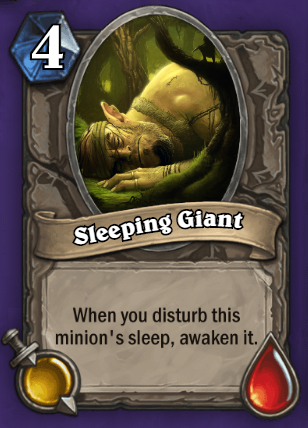
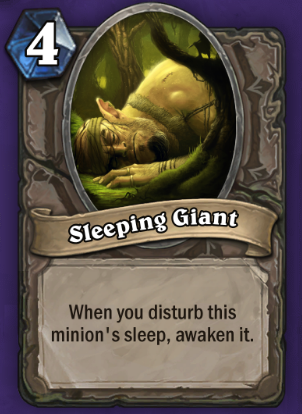
Left Image = How the card appears on the canvas.
Right Image = How the card appears after it's published.
Although there are no set-in-stone rules as to what effects justify a certain rarity, try to use common sense when you choose the rarity and effect of your card in relation to each other.
Text
Following our balancing process, here is where you will write the text of your card, which will translate into the ability, or abilities, the card will hold. That is unless you want to make a textless vanilla minion, in which case leave this field blank.
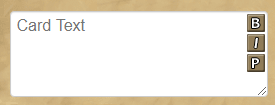
The “B” button will make a part of a highlighted text bold. Existing keywords will be bolded automatically, saving you some time. Diminutives of trigger based keywords, however, are sometimes not bolded.
For example, writing “Battlecry” without the colon (as found on cards like Crowd Favorite or Murmuring Elemental) will be automatically bolded. However, writing “Battlecries” (as found on Brann Bronzebeard or Heart of Vir'naal) will be not. All passive keywords (Taunt, Stealth, Divine Shield, etc.) as well as their diminutives such as “Stealthed” (found only on one card in the game, Shadow Sensei) and “Adaptation” (which is not used in game at all) will be automatically bolded. The bold feature is extremely useful for making custom keywords, though you will need to manually bold your new keyword every time you use it.
The “I” button will italicize a part of a highlighted text, found commonly as a clarification text. Examples of cards that use italic text include Nefarian, Undercity Huckster, Yogg-Saron, Hope's End, Shudderwock, Nightmare Amalgam, Jan'alai, the Dragonhawk, or Gallywix's Coin.
The “P” button will display the text on your card. Unlike the name, tribe, and basically everything else, the textbox of your card will not update on the canvas by itself. You’ll need to click this button to display the text on the card.
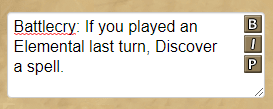
Once you write this, and click the “P” button ...
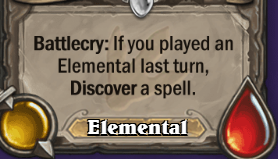
... it will display like this on the card.
Watermark
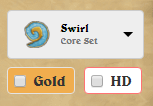
Every Hearthstone set has a unique watermark which appears on all cards that belong to that set. Don't forget to add yours, otherwise the card will look like it belongs to the Basic set (no watermark)! Directly to the right of the textbox field is a tool which will let you change the watermark of the card. Clicking on the button will bring down a menu of all watermarks to choose from.
If you scroll all the way down, you’ll reach the “Custom” option.
![]()
Clicking this will open an entire new menu.
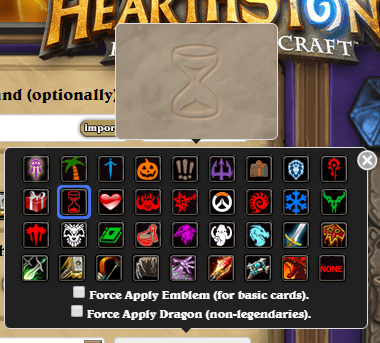
Here, you can choose from 35 custom watermarks, or an option to simply have no watermark at all. A small window will also appear above, displaying how the watermark will look like on a card.
After you change the watermark of your card, simply making one adjustment to the card will correctly display the new watermark on the canvas. Not all custom watermarks will be displayed on the canvas, but they will all be displayed properly after you publish the card.
There are also two check marks. Normally, Basic cards do not have a watermark, but selecting “Force Apply Emblem (for basic cards)” will apply the watermark to them. This is used for making uncollectible cards, such as tokens, Choose One options, or PVE-exclusive cards.
The second check mark, “Force Apply Dragon (non-legendaries)”, will let you display the silver dragon element on non-Legendary cards. This is useful for creating tokens for Legendary cards, such as Master Chest or any of the four horsemen from The Four Horsemen, as well as PVE-exclusive cards.
You also have the option to make the card golden by clicking the “Gold” button, although there is no tool to give the card an animation. To do that, you’d need to use additional tools like Photoshop. You can also click the “HD” button to add a background to the card.
Artwork
The final step, before you publish your card, is to add a card image, an artwork, for the card. By default, this option will be set to “Picture” which will allow you to choose an image file saved in your computer and apply it to the card.

Alternatively, clicking “URL” will change its mode and accept image URLs from the internet.

At this point, it becomes a Google Image scavenger hunt. Going to Google Images and typing “_____ fantasy art” or something along those lines is typically a good start. Websites like Artstation, Deviantart or Pinterest can also be of great help. Once you find an image you like, right-click on it and select “Copy image URL”, and paste it into the field. It will then be applied to the card.
By selecting “Picture” again, you will change the mode back from "URL" to "Picture". Be warned: if the picture is too small or too large, the system will tell you as such (it will tell you the image is “too small” even if what it really means is “too large”), and the picture quality will generally be blurred. In most cases, it is recommended that you save every piece of artwork you use into a folder in your computer, so you always have an easy access to it if you want/need to make a modification to the card. Sometimes an image that doesn’t work in “URL” mode might work properly in “Picture” mode.
Once you import an image, a slider will appear below the card. Clicking and dragging the image inside the card will move it around. The slider will zoom the image in and out. You can also use your mouse wheel for more precise adjusting. Combine these two to get the perfect center-viewpoint for your card.
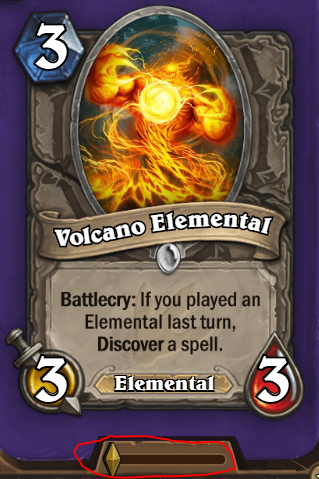
We ended up getting lucky here, and didn’t need to do anything.
Almost there!
Your screen will now look something like this. You’re just about ready to publish the card now. Don't forget to do the last once-over to spot any mistakes or parts you might have forgotten to fill out. When you're ready to finish your card, click “Create”.
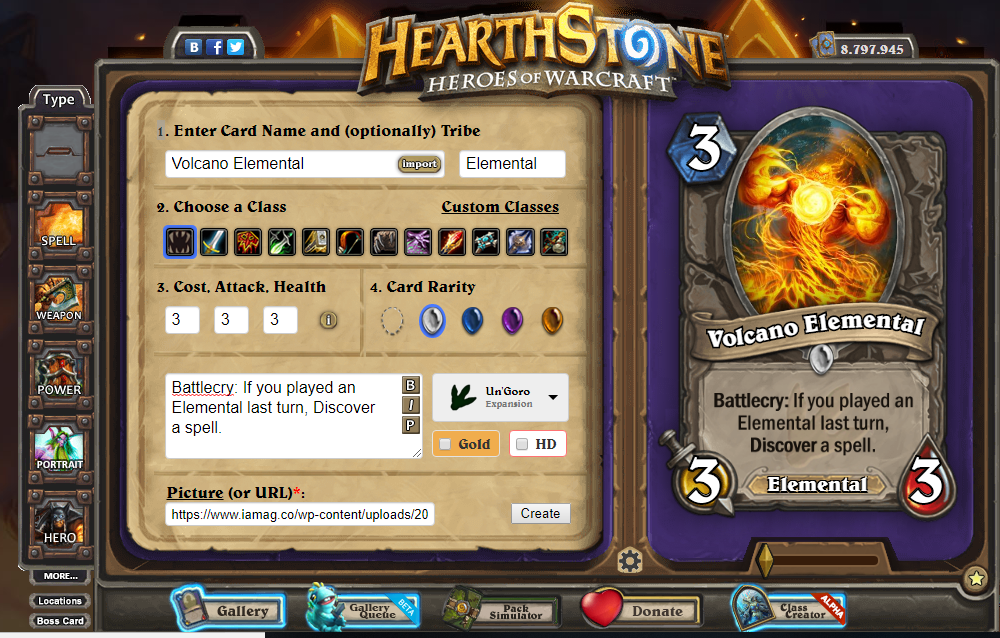
On the next screen, you will be given a temporary link, and a BBCode of the card, however HearthCards will keep the image links only for a few days. If you want the card to be stored permanently, you’ll need to either save it into the gallery or to your computer instead. Right-click on the card and select “Save Image As” and save it into your computer.
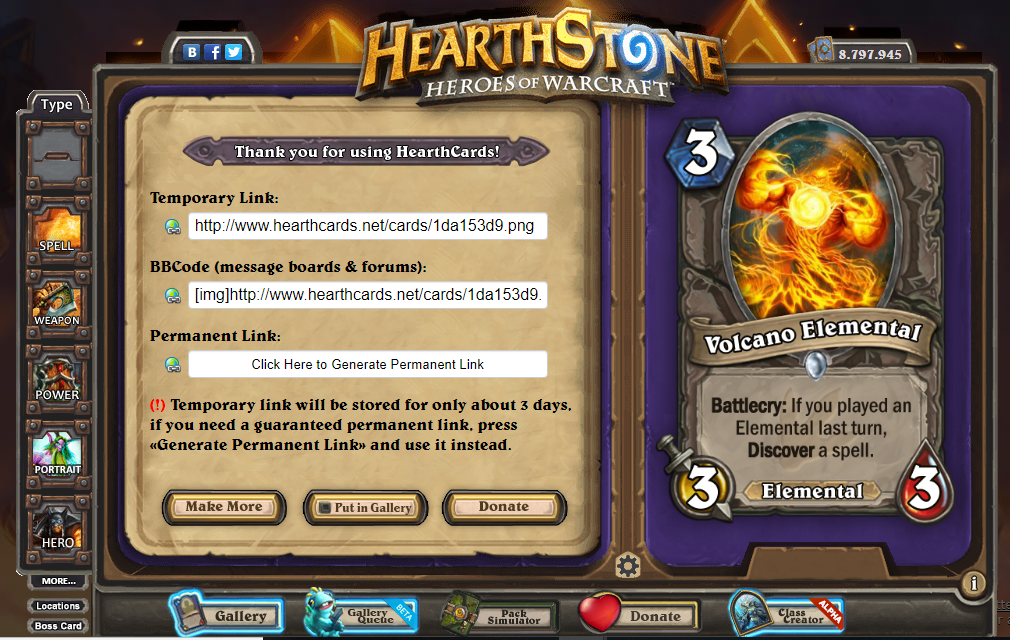
Additionally, you can select “Put in Gallery” to put the card into the gallery queue, “Make More” to continue making cards, or “Donate” if you wish to make a donation to the creator to keep HearthCards running.
If you check the “Put in Gallery” option, following message will appear. If the card has a token, select “Click Here (+Token)” and chain a token to the card. You can chain multiple tokens to the card when you continue to click this button after each created card. Selecting “New Separate Card” will end the chain.
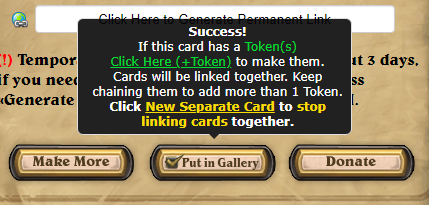
That about does it for this issue of Fan Creation Tutorials, but we’re not quite done with HearthCards. Our next installment will cover some of the more advanced tools of HearthCards, and explore the rest of the website.
Thank you for reading. Did you ever use HearthCards to create your own custom card? Which card are you most proud of? Show us in the comments!
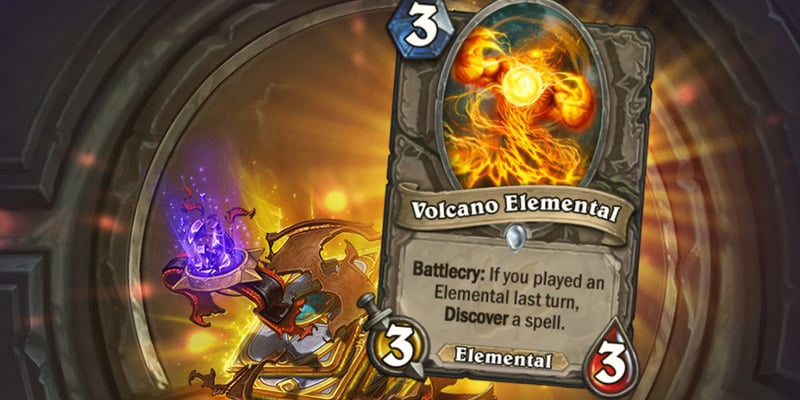
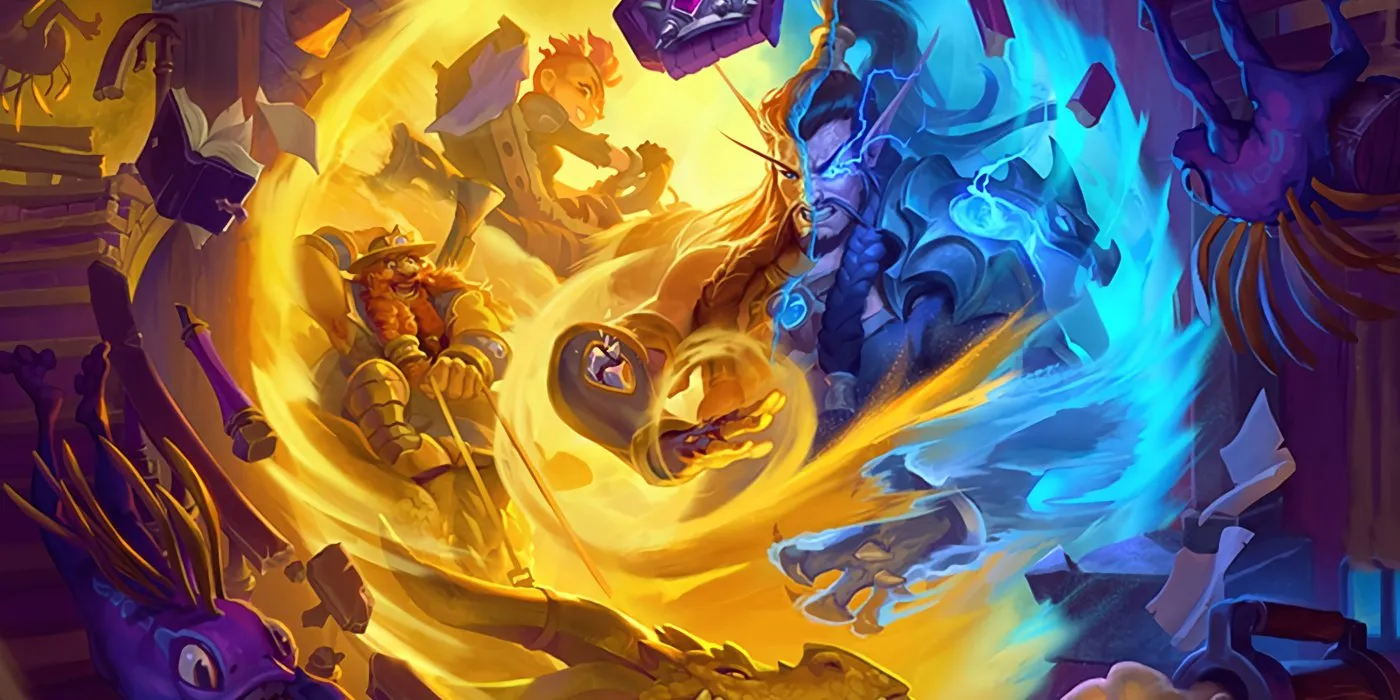
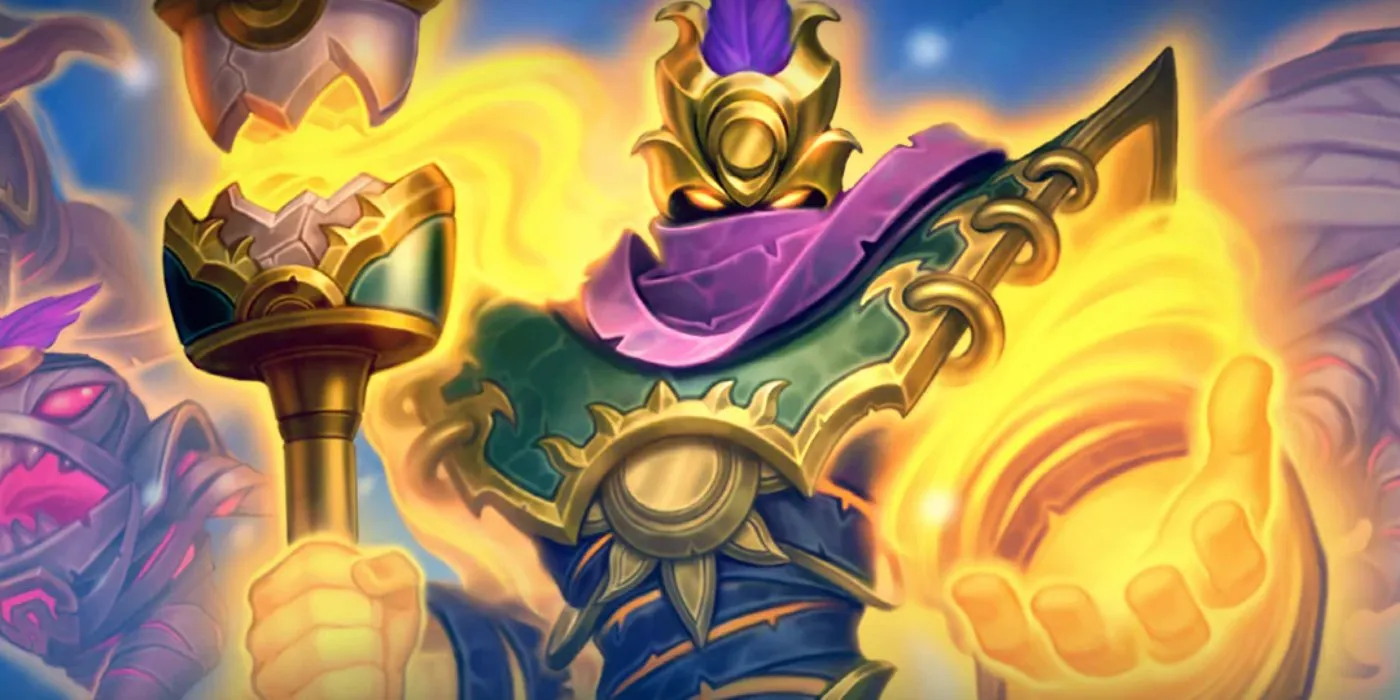
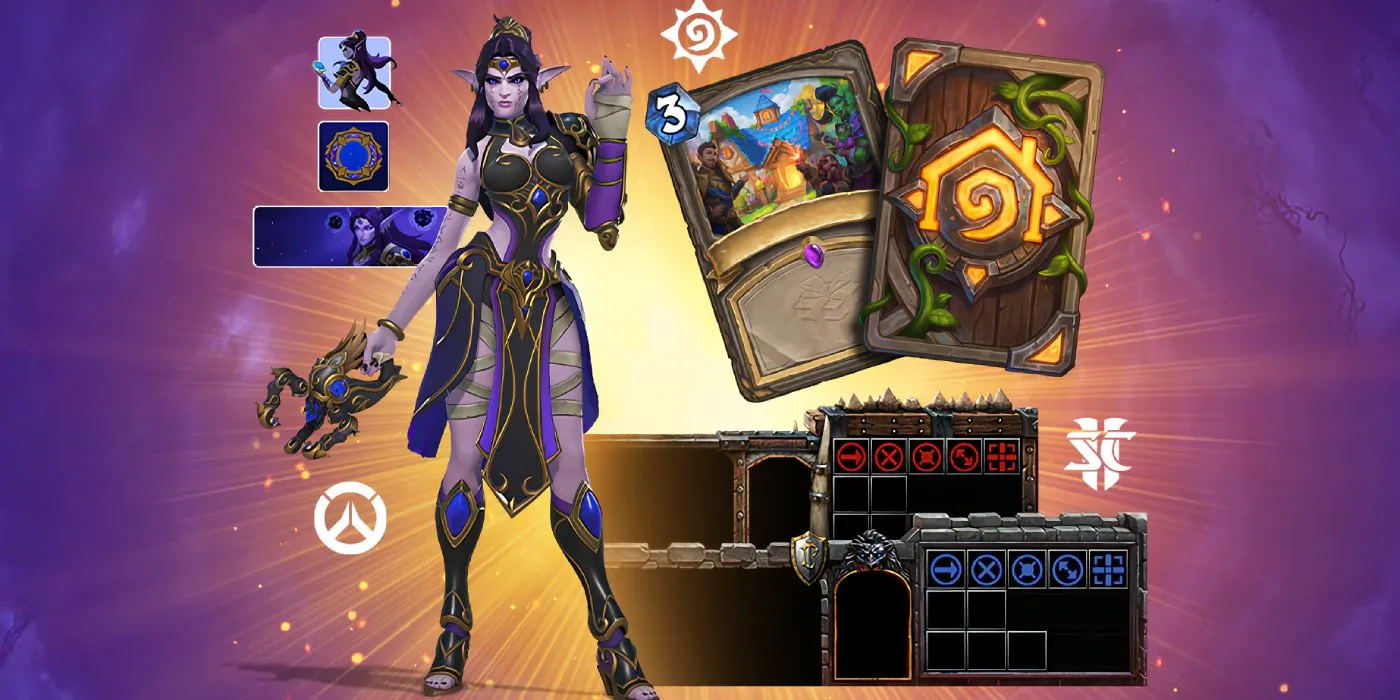
Comments
Does this mean a competition is forthcoming‽
Sadly, there is currently no ETA as to when WCDCs will start here.
Really usefull, thank you.
I did not know about "P" making the text appear on the card. That will save me some rewrites that's for sure
Great Guide! I’ve used HearthCards before to make a SoU custom card before the expansion came out. One question I have is about the artwork, I’ve always been conscious about using someone else’s artwork from Artstation or Deviant art. I usually (if I can) credit the work of the art used to make a custom card. My question is, is it something I always need to do before submitting a custom card
From my personal experience, most people don't care whether or not you explicitly credit your art sources. It's more of a personal preference thing, so you've got nothing to worry about.
This needs to be part of a template full of useful links for every fan created card competition on OoC. This is the kind of documentation I write in IT professionally. (Screenshots, treat the user as brand new.) Nice work!
Awesome starter’s guide on what is honestly my favorite site! Keep up the good work!
My favorite custom card I've made would probably be this one:
It's not super strong and requires a little set up, but I felt it was an interesting card. Play it the turn before Sul'thraze and hit it with an Inner Rage or two and you've got the weapon to clear some small minions and this guy to attack face several times.
Another fun one I was Inspired to create was one similar to an old legendary Nexus-Champion Saraad, but with a Toki-type of twist!
Incomplete guide.. I wanna know how to wake the giant.
Otherwise a great guide! Will certainly be very useful.
So when are we going to see functionality on this site to save our cards here. Because hearthcards doesn’t save your cards unless you pay money
Functionality for that on Out of Cards is being discussed as we speak.
For the moment, you can always just save the card into your computer and upload it to a site like Imgur to keep the card permanent.
This is amazing. The best guide i've ever seen for hearthcards. Bravo!
We still have more to cover, so stay tuned for part 2!